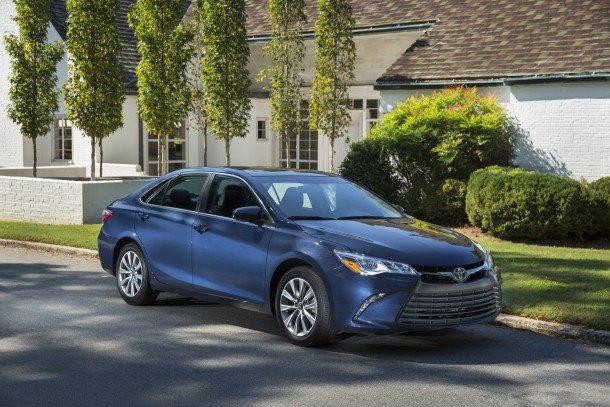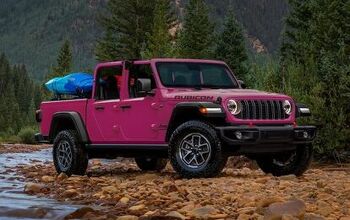2015's Most Popular Vehicles in America - Segment by Segment by Segment
American consumers, businesses, and government agencies registered a record-setting 17.5 million new vehicles in 2015. That takes into account more than 2.5 million pickup trucks, half a million minivans, more than 420,000 commercial vans, more than 420,000 subcompact crossovers, and nearly 2.4 million midsize cars.
But as SUV/CUV sales increased rapidly, pickup trucks strengthen, and car sales decline, which vehicles dominated their respective categories?
Envelope, please.
Subcompact Car – Nissan Versa
Compact Car – Toyota Corolla
Midsize Car – Toyota Camry
Large Car – Chevrolet Impala
Sports Car – Ford Mustang
Premium Car – BMW 3-Series
Premium SUV/CUV – Lexus RX
Subcompact SUV/CUV – Subaru XV Crosstrek
Compact SUV/CUV – Honda CR-V
Intermediate/Large SUV/CUV – Ford Explorer
Midsize Pickup Truck – Toyota Tacoma
Full-Size Pickup Truck – Ford F-Series
Minivan – Toyota Sienna
Small Commercial Van – Ford Transit Connect
Full-Size Commercial Van – Ford Transit
Timothy Cain is the founder of GoodCarBadCar.net, which obsesses over the free and frequent publication of U.S. and Canadian auto sales figures. Follow on Twitter @goodcarbadcar and on Facebook.
More by Timothy Cain
Latest Car Reviews
Read moreLatest Product Reviews
Read moreRecent Comments
- JLGOLDEN Enormous competition is working against any brand in the fight for "luxury" validation. It gets murky for Cadillac's image when Chevy, Buick, and GMC models keep moving up the luxury features (and price) scale. I think Cadillac needs more consistency with square, crisp designs...even at the expense of aerodynamics and optimized efficiency. Reintroduce names such as DeVille, Seville, El Dorado if you want to create a stir.
- ClipTheApex I don't understand all of the negativity from folks on this forum regarding Europeans. Having visited the EU multiple times across different countries, I find they are very much like us in North America-- not as different as politicians like to present them. They all aren't liberal "weenies." They are very much like you and me. Unless you've travelled there and engaged with them, it's easy to digest and repeat what we hear. I wish more Americans would travel abroad. When they return, they will have a different view of America. We are not as perfect or special as we like to believe. And no, many Europeans don't look up to America. Quite the opposite, actually.
- Dwford Let's face it, Cadillac is planning minimal investment in the current ICE products. Their plan is to muddle through until the transition to full EV is complete. The best you are going to get is one more generation of ICE vehicles built on the existing platforms. What should Cadillac do going forward? No more vehicles under $50k. No more compact vehicles. Rely on Buick for that. Many people here mention Genesis. Genesis doesn't sell a small sedan, and they don't sell a small crossover. They sell midsize and above. So should Cadillac.
- EBFlex Sorry BP. They aren’t any gaps
- Bd2 To sum up my comments and follow-up comments here backed by some data, perhaps Cadillac should look to the Genesis formula in order to secure a more competitive position in the market. Indeed, by using bespoke Rwd chassis, powertrains and interiors Genesis is selling neck and neck with Lexus while ATPs are 15 to 35% higher depending on the segment you are looking at. While Lexus can't sell Rwd sedans, Genesis is outpacing them 2.2 to 1.Genesis is an industry world changing success story, frankly Cadillac would be insane to not replicate it for themselves.





































Comments
Join the conversation
Thought I saw in this space a few weeks back that the Versa and Soul were neck and neck in the subcompact segment with a few weeks to go. Musta been elsewhere.
I never was popular myself, so I can fully understand why these are popular. They're so generic it's sick.